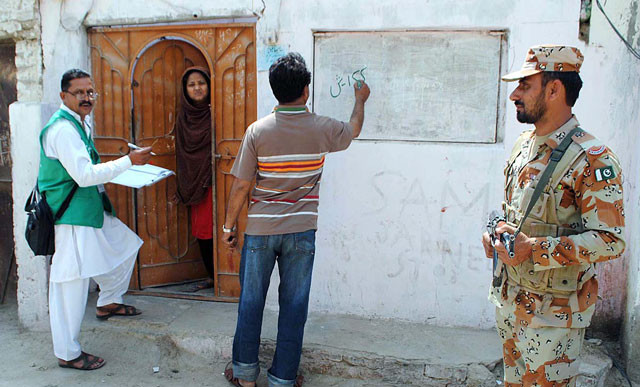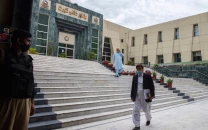Gender stats: Still a man’s world, but less so
Sex ratio shows improvement, but is still higher than global average; urban areas have higher discrepancies

Work on 361 blocs has been completed while the work in 359 blocs will be completed before April 15. PHOTO: APP/FILE
This gender gap is higher in urban areas as compared to rural ones. The gap in the sex ratio has witnessed a continuous declining trend at the national and provincial level for the past 36 years.
Summary results of the 6th Population and Housing Census show that in 1981, there were 110.6 males per 100 females in the country, which fell to 108.1 males per 100 females in 1998, when the previous census was conducted.
Punjab has witnessed the largest improvement in this regard, where there are now 103.5 males for every 100 females. The figure in Punjab stood at 110.8 in 1981 and 106.9 in 1998.
Interestingly, in rural Punjab, the sex ratio falls to 102.2, presumably due to men moving to the cities in search of employment. It is 105.8 in urban areas.
Why the census is important for Pakistan
In Khyber-Pakhtunkhwa, there are 102.7 males for every 100 females, down from 108.8 in 1981 and 104.3 in the 1998.
The ratio was 101.6 males to 100 females in rural areas, and 107.8 in urban areas.
Surprisingly, Islamabad has the largest gap, with 111 males per 100 females – well above the national average but also declining historically. It was 118.9 in 1981 and 116.2 in 1998.
The most significant decline has been observed in urban areas of Balochistan, where there are now 111.6 males for every 100 females. The same ratio in urban areas of the province was 122 in 1998.
Overall, the sex ratio for Balochistan stands at 110.6, compared to 111.5 in 1981 and 114.9 in 1998.
6th census findings: 207 million and counting
In Sindh, the overall sex ratio stands at 108.6 with relatively low rural-urban variance. It is 107.8 in rural areas and 109.3 in urban areas.
In 1981, the ratio was 110.7, which increased to 111.7 in the 1998 census.



















COMMENTS
Comments are moderated and generally will be posted if they are on-topic and not abusive.
For more information, please see our Comments FAQ